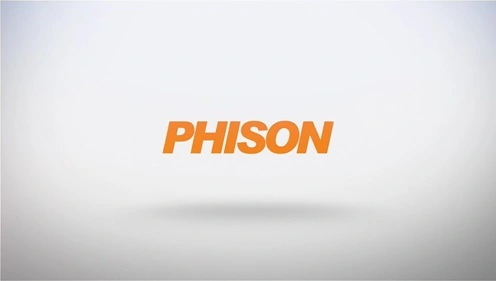Physics Wallah (PW), founded in 2016 by Alakh Pandey, has rapidly emerged as one of India’s leading edtech platforms. Initially starting as a YouTube channel offering free Physics lessons for students preparing for competitive exams like JEE (Joint Entrance Examination) and NEET (National Eligibility cum Entrance Test), PW has now grown into a full-fledged edtech unicorn. With its affordable and high-quality learning resources, the platform has disrupted the traditional education sector and made competitive exam preparation accessible to millions. This article explores Physics Wallah’s business model and explains how it earns money.
Overview of Physics Wallah’s Business Model

Physics Wallah operates on a direct-to-consumer (D2C) freemium edtech model, focusing on affordability and accessibility for students across India. Its model revolves around:
- Online Learning: Providing video lectures, live classes, and digital study material for a range of academic and competitive exams.
- Offline Centers: Running offline learning centers (termed as PW Vidyapeeths) to cater to students who prefer in-person classes.
- Hybrid Approach: Combining digital resources with physical classrooms to create a blended learning ecosystem.
- Affordable Pricing: Offering courses at significantly lower prices compared to competitors like BYJU’S, Vedantu, and Unacademy.
By focusing on affordability and personalized teaching, Physics Wallah has positioned itself as a reliable and cost-effective edtech platform.
Revenue Streams
Physics Wallah generates revenue through a mix of online and offline offerings:
a) Paid Courses and Subscription Plans
The majority of Physics Wallah’s revenue comes from its paid courses designed for competitive exams like JEE, NEET, CUET, and board exams. These include:
- Live Classes: Students can attend live sessions from expert faculty covering Physics, Chemistry, Biology, and Mathematics.
- Recorded Lectures: Access to pre-recorded lectures for self-paced learning.
- Crash Courses: Short-term, intensive preparation programs for last-minute exam revision.
Revenue Source:
- Students pay a one-time fee or subscription amount for these courses, which are priced much lower than market standards, starting as low as ₹3,500.
b) Study Material and Test Series
Physics Wallah offers study materials, including:
- Printed and digital notes, practice questions, and mock tests.
- Comprehensive test series designed to mimic the format of competitive exams.
Revenue Source:
- Fees for study materials and test series, often bundled with course packages.
c) Offline Centers (PW Vidyapeeths)
PW has established offline learning centers in cities like Kota, Patna, and Delhi to cater to students who prefer traditional classroom learning. These centers offer:
- In-person classes for competitive exams.
- Mentorship and doubt-solving sessions.
Revenue Source:
- Tuition fees from students enrolling in offline courses.
d) YouTube Ad Revenue
Physics Wallah started as a YouTube channel, and free content continues to be a significant driver of traffic to its platform. The YouTube channel earns revenue through:
- Google AdSense: Ad revenue generated from millions of views on video lessons.
- Brand Collaborations: Sponsored promotions and partnerships.
Revenue Source:
- The channel’s consistent high engagement ensures a steady flow of ad revenue.
e) PW App and Platform Subscriptions
The Physics Wallah app and website host a variety of free and paid content, including:
- Topic-wise videos.
- Doubt-solving sessions.
- Community discussions.
Revenue Source:
- Subscription fees for premium features, including ad-free experiences and personalized mentorship.
f) Micro-Courses
PW offers affordable micro-courses, which are focused on specific topics or chapters. These short courses are ideal for students who need targeted help in weak areas.
Revenue Source:
- One-time fees for each micro-course, priced attractively to encourage wider adoption.
g) Merchandise and Accessories
Physics Wallah also sells branded merchandise, including:
- Notebooks, stationery, and educational accessories.
- T-shirts and mugs with inspirational quotes for students.
Revenue Source:
- Sales of these products through their online store.
h) Corporate Partnerships and School Collaborations
Physics Wallah partners with schools and coaching institutions to offer its resources, study materials, and test series as part of their curriculum.
Revenue Source:
- Licensing fees from institutions using PW’s content.
- Revenue-sharing agreements for co-branded initiatives.
Cost Structure
Physics Wallah operates with a lean cost structure, focusing on cost efficiency while scaling its operations. Key cost drivers include:
a) Faculty and Staff Salaries
PW employs experienced teachers and mentors, whose salaries form a significant part of its operational costs.
b) Content Production
Producing high-quality video lectures and digital materials involves costs for:
- Video recording and editing.
- Animation and graphics for better visualization.
c) Technology Infrastructure
Running a robust platform requires investments in:
- Mobile app and website maintenance.
- Hosting and streaming services for live and recorded classes.
- AI-driven tools for personalized learning.
d) Marketing and Outreach
Physics Wallah focuses on low-cost, organic marketing strategies but still incurs expenses for:
- Social media campaigns.
- Offline promotions in target markets.
e) Offline Centers
Operating PW Vidyapeeths involves expenses such as rent, utilities, and staff salaries.
Unique Features Driving Revenue Growth
Physics Wallah employs several strategies to sustain growth and generate revenue:
a) Affordable Pricing
PW’s courses are priced at a fraction of what competitors charge, making it accessible to a large segment of students, especially in Tier 2 and Tier 3 cities.
b) High-Quality Content
With engaging teaching methods and well-structured material, PW ensures high retention rates and word-of-mouth promotion.
c) Regional Focus
PW offers courses in multiple languages, including Hindi, Bengali, and Tamil, catering to students from diverse linguistic backgrounds.
d) Blended Learning
Combining online and offline learning models ensures wider reach and flexibility for students.
e) Community Building
PW fosters a strong community of learners by encouraging discussions, peer support, and mentorship programs.
Challenges and Opportunities
Challenges
- Intense Competition: Competing with established players like BYJU’S, Unacademy, and Vedantu.
- Scalability of Offline Centers: Managing costs and maintaining quality across multiple locations.
- Piracy: Protecting digital content from unauthorized sharing.
Opportunities
- Expansion into New Segments: Diversifying into K-12 education and government exam preparation.
- Global Reach: Tapping into international markets, especially for Indian diaspora students.
- Technology Integration: Using AI and data analytics to enhance personalized learning experiences.
Financial Overview
Physics Wallah achieved unicorn status in 2022, raising $100 million at a valuation of $1.1 billion. Its focus on profitability, lean operations, and affordable offerings differentiates it from heavily funded but loss-making competitors.
Conclusion
Physics Wallah’s success lies in its ability to provide high-quality, affordable education to students across India. By combining digital innovation, cost efficiency, and a student-first approach, it has created a scalable and sustainable business model. With its ongoing expansion into offline centers, regional markets, and new educational segments, Physics Wallah is well-positioned to lead India’s edtech revolution.

